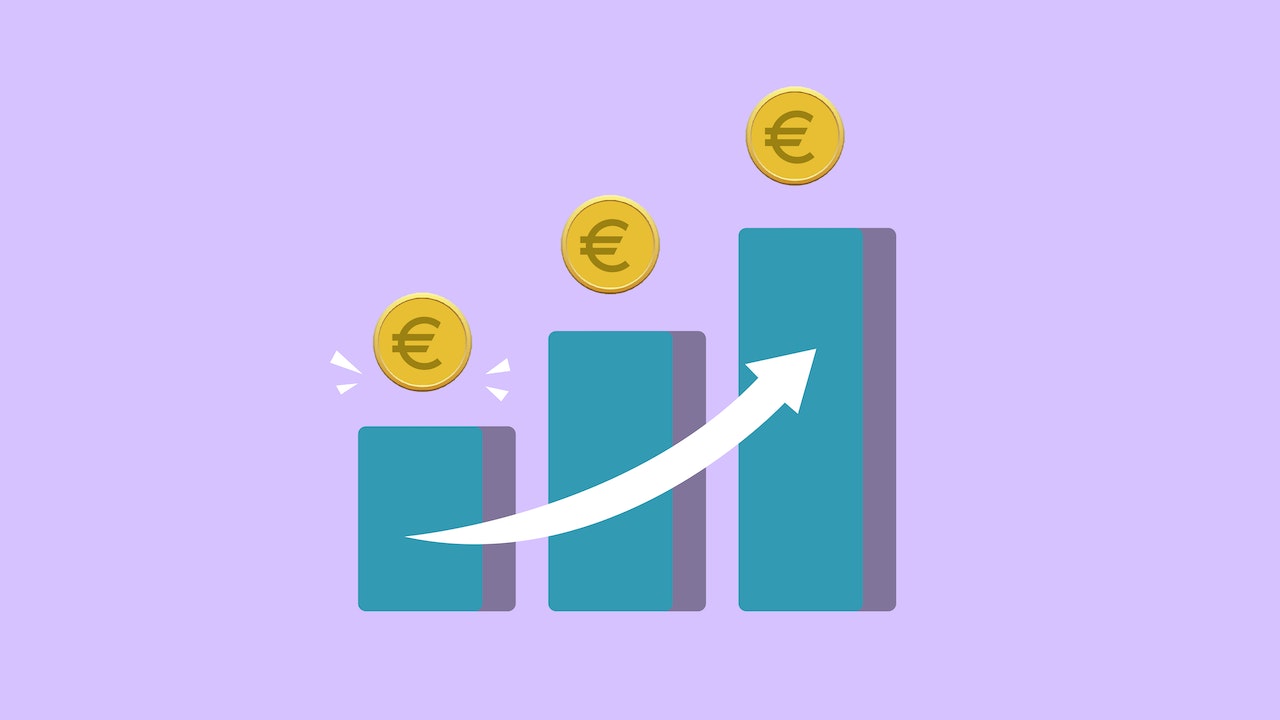When it comes to launching a new product or service, having a clear GTM strategy is crucial for success. It lays the foundation for how a company will reach its target market, generate leads, and ultimately drive revenue. Because examples help us learn faster, I decided to complement my blog on how to build a winning GTM plan with a go-to-market strategy example.
This article is based on my own product marketing experience when I had the chance to plan and manage several product launch processes. For the purpose of this example, I created a fictive but relevant case study: NoPhishToday, a SaaS startup in the cybersecurity industry. The company develops a software solution that protects against phishing attacks and targets small and medium businesses.
By the end of this go-to-market strategy example, you will have a better understanding of how to create a comprehensive go-to-market strategy and how to apply it to your own business. I will show how to build the GTM plan for a company like NoPhisToday and will cover the following:
- Market Overview
- Targeting, Competition, and Unique Selling Proposition
- Product Features and Benefits
- Pricing Strategy
- Launch Plan and Go-to-Market Tactics
GTM Plan Objectives
The NoPhishToday go-to-market strategy example is focused on achieving the following objectives:
- increase brand awareness
- generate leads
- drive conversions
In real life, these objectives should be in sync with the larger marketing plan and should have clear and achievable values attached (e.g. 500 leads). The strategy and tactics included in the plan will be calibrated to achieve the objectives.
Industry Context
Phishing attacks are a major concern for small and medium businesses, and traditional solutions often lack effectiveness. NoPhishToday offers comprehensive software that:
- automatically detects and blocks phishing emails
- educates and tests users on how to identify and avoid phishing emails
This value proposition addresses the risk of security incidents generated by phishing attacks which is critical for small and medium-sized businesses.
Target Market and Unique Selling Proposition
- Ideal target audience: Small and medium-sized businesses with a focus on the industries that are frequently targeted by phishing attacks: finance, healthcare, and retail.
- Key pain points: Lack of affordable integrated solutions that detect malicious emails and provide user training on how to avoid falling victim to fishing attacks.
- The unique selling proposition: Providing a comprehensive approach to protect against phishing attacks. It combines real-time software protection with interactive employee training that educates and tests employees on how to identify and avoid phishing emails.
Buyer persona and messaging
Given the size of the targeted organizations, the IT Director or Manager is likely to be the primary decision-maker when it comes to cybersecurity solutions and is concerned with protecting the organization’s sensitive data and ensuring compliance with regulations. The CFO is also a relevant persona, mostly concerned with the potential costs of a security breach and the return on investment of cybersecurity solutions. The HR Manager is interested in the organization’s overall security and employees’ education to avoid cyber threats.
The product messaging will effectively communicate the benefits of the solution to these personas. The messaging will highlight the software’s ability to automatically and accurately protect against phishing attacks, its interactive employee training, and its custom security policies. This messaging will be consistent across all marketing materials and will be tailored to address the specific pain points and concerns of each persona.
Market size and Competition
The size of the global phishing protection market is expected to grow at a CAGR of 11.6% from 2022 to 2030 providing reasonable room for growth. Additionally, it is estimated that the cost of a successful phishing attack can be as high as $1.6 million per incident, highlighting the need for effective solutions to protect against phishing attacks.
Though, NoPhishToday operates in a highly competitive market, with several established players offering similar solutions to protect against phishing attacks. Some of the main competitors include companies that offer anti-phishing software, employee training programs, and phishing simulation services.
Product Features and Benefits
Key Features
- NoPhishToday differentiates itself from competitors by providing a comprehensive approach. That includes interactive employee training and advanced algorithms to detect and block phishing emails.
- Phishing Email Detection and Blocking: Advanced algorithms and machine learning to detect and block phishing emails in real-time.
- Interactive Employee Training Program: Educates and tests employees on how to identify and avoid phishing emails.
- Reporting and Analytics: Tools that give managers and IT staff visibility into phishing attempts and employee engagement with the training program.
Main Benefits
- Increase the resilience against phishing attacks by employing a two-line defense strategy (real-time protection and user education)
- Reduce the risk of security incidents and data breaches that can affect the business reputation
- Reduce the overall costs and project implementation time through the individualized user learning processes
Launch Plan and Go-to-Market Strategy
SWOT Analysis:
- Strengths: Comprehensive solution that addresses multiple pain points and that sets NoPhishToday apart from competitors. Potential partnerships with IT consulting companies and Managed Service Providers (MSPs) to offer their software as part of their cybersecurity services.
- Weaknesses: Lack of brand awareness, and limited resources for marketing and advertising.
- Opportunities: Growing market for cybersecurity solutions, potential to expand target market to include larger businesses.
- Threats: Presence of well-established competitors, changes in regulations or technology that could impact the market.
Pricing Strategy
NPT offers the software on a subscription basis, with plans tailored to the needs of small and mid-sized businesses. A free trial allows potential customers to try the software before committing to a purchase. The company’s pricing is based on the number of employees that need to be protected, which allows customers to pay only for what they need. NoPhishToday offers discounts for annual subscriptions and volume discounts for larger businesses.
Go-to-Market Strategy Example Tactics
- Webinars: Host webinars to educate potential customers on the features and benefits of NoPhishToday’s software. They will be designed to address the specific pain points of small and medium-sized businesses. The webinars will be held on a regular basis, and registration will be promoted through targeted online advertising, email campaigns, and social media posts.
- Content marketing: The company will create informative content that educates potential customers about the software and its benefits. By providing valuable information to potential customers, NoPhishToday will establish itself as a thought leader in the industry, build trust with potential customers, and ultimately generate leads and drive conversions.
- Targeted online advertising: Use targeted online advertising to reach potential customers who are actively searching for solutions to protect against phishing attacks. Advertisements will be placed on relevant websites, search engines, and social media platforms.
- Influencers marketing: The company will work with industry experts and influencers to raise awareness about the software and its benefits. NoPhishToday will so tap into established audiences and reach potential customers who are already interested in cybersecurity solutions. Additionally, influencer marketing can help to increase brand awareness, build credibility, and establish the company as a thought leader in the industry.
- Referral program and free assessment service: Implement a referral program and free assessment service to generate leads and build a user base. This will be promoted through email campaigns, social media posts, and website pop-ups.
Distribution channels
In our go-to-market strategy example, NoPhishToday utilizes a multi-channel approach to reach and engage its target market. The company’s primary distribution channels include online self-service, direct sales, and partners.
- The online self-service channel enables customers to purchase and download the software directly from the company’s website. This channel reaches customers who are actively searching for solutions to protect against phishing attacks and prefer to purchase software online.
- The direct sales team is responsible for reaching out to potential customers and providing them with more information about the offering. Direct sales allow the company to provide larger prospects with a more personalized experience.
- Partner with IT consulting companies and Managed Service Providers (MSPs) to offer the software as part of their cybersecurity services to their clients. This allows the NoPhishToday to reach a wider audience and reduce customer acquisition costs.
Go-to-market strategy example performance tracking
Measuring the performance of NoPhishToday’s go-to-market strategy is essential to understanding the effectiveness of the company’s marketing and sales efforts. The company will track a set of metrics and KPIs (Key Performance Indicators) to measure the success of its efforts. These metrics will include:
- Number of webinar attendees
- Number of free trial sign-ups
- Conversion rates from free trial to paid customers
- Customer Acquisition Cost (CAC)
- Customer Lifetime Value (CLV)
- Number of new customers acquired through online advertising
- Number of leads generated through a referral program and free assessment service
- Number of partnerships established
These metrics will provide insight into the effectiveness of the company’s go-to-market strategy execution and allow NoPhishToday to make data-driven decisions to optimize its efforts.
Additionally, the company will track the performance of the software through the number of blocked phishing attacks and the number of employees who completed the training. This will help the company to improve the software and adapt it to the needs of its customers.
Conclusion
NoPhishToday’s GTM plan illustrates the importance of a comprehensive go-to-market planning process in reaching and engaging ideal customers. Conducting market research, developing a unique selling proposition, creating a pricing strategy, and implementing a distribution plan are critical parts of the plan.
This Go-to-market strategy example also shows how additional strategies such as influencer marketing, performance tracking, and content marketing can be leveraged to increase brand awareness, generate leads, and drive conversions. As previously discussed in my go-to-market planning blog, this process is essential for any company looking to launch a new product or service and ultimately achieve success in the market.




